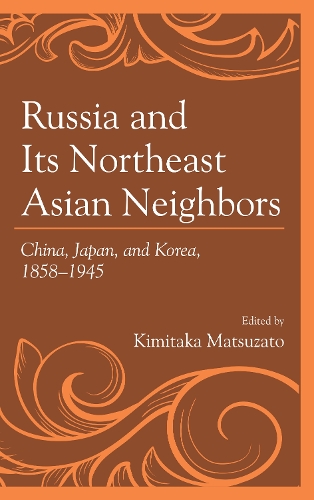
Russia and Its Northeast Asian Neighbors: China, Japan, and Korea, 18581945
(Paperback)
Available Formats
Publishing Details
Russia and Its Northeast Asian Neighbors: China, Japan, and Korea, 18581945
By (Author) Kimitaka Matsuzato
Contributions by Masafumi Asada
Contributions by Shinichi Fumoto
Contributions by Yoshiro Ikeda
Contributions by Michiko Ikuta
Contributions by Catherine Ladds
Contributions by Kimitaka Matsuzato
Contributions by Dmitrii B. Pavlov
Contributions by Andreas Renner
Contributions by Yukimura Sakon
Bloomsbury Publishing PLC
Lexington Books
31st October 2018
United States
Classifications
Professional and Scholarly
Non Fiction
Historiography
European history
Asian history
327.4705
Physical Properties
Paperback
222
Width 151mm, Height 222mm, Spine 16mm
331g
Description
As a result of the Aigun (1858) and Beijing Treaties (1860) Russia had become a participant in international relations of Northeast Asia, but historiography has underestimated the presence of Russia and the USSR in this region. This collection elucidates how Russia's expansion affected early Meiji Japan's policy towards Korea and the late Qing Empire's Manchurian reform. Russia participated in the mega-imperial system of transportation and customs control in Northern China and created a transnational community around the Chinese Eastern Railway and Harbin City. The collection vividly describes daily life of the emigre Russians' community in Harbin after 1917. The collection investigates mutual images between the Russians and Japanese through the prism of the descriptions of the Japanese Imperial House in Russian newspapers and memoirs written by Russian POWs in and after the Russo-Japanese War and war journalism during this war. The first Soviet ambassador in Japan, V. Kopp, proposed to restore the division of spheres of interest between Russia and Japan during the tsarist era and thus conflicted People's Commissar of Foreign Affairs, G. Chicherin, the Soviet ambassador in Beijing, L. Karakhan, and Stalin, since the latter group was more loyal to the cause of China's national liberation. As a whole, the collection argues that it is difficult to understand the modern history of Northeast Asia without taking the Russian factor seriously.
Reviews
. . . . this edited volume is a valuable contribution to the academic endeavor of writing an integrated history of Northeast Asia and highlighting the interplay between the three main actors in the Far East. It presents a genuine macro-regional history, not a medley of national histories (ix). * Slavic Review *
In general, the quality of the scholarship makes this an essential volume for specialists and a helpful one for anybody interested in Russia, China, and Japans interactions during all three countries late imperial periods and the revolutionary transformations of the first half of the twentieth century. * The Russian Review *
In recent years many books on the history of the Far East have been published and attention to the regions past has clearly increased. However, I agree with the editor of the book under review, Kimitaka Matsuzato, that its title is almost revolutionary because it reflects the current change in the understanding of Russias historical role in the region: from a supporting player to one of the main actors in the Far Eastern scene. . . . this book gives a large-scale and impressive picture of Russias participation in various spheres of life in the Far East during the nineteenth and twentieth centuries. * Asian Review of World Histories *
This great collection, including contributions from an impressive cohort of Japanese scholars, uncovers a range of new sources and perspectives to build a history of Northeast Asia out of little-known cross-cultural and transnational encounters. The effect of adding Russia to the regional brew is bracing, serving to re-interpellate and reinterpret the dominantly Asia-centric literature. -- David Wolff, Slavic-Eurasian Research Center, Hokkaido University
Author Bio
Kimitaka Matsuzato is professor at the University of Tokyo.
